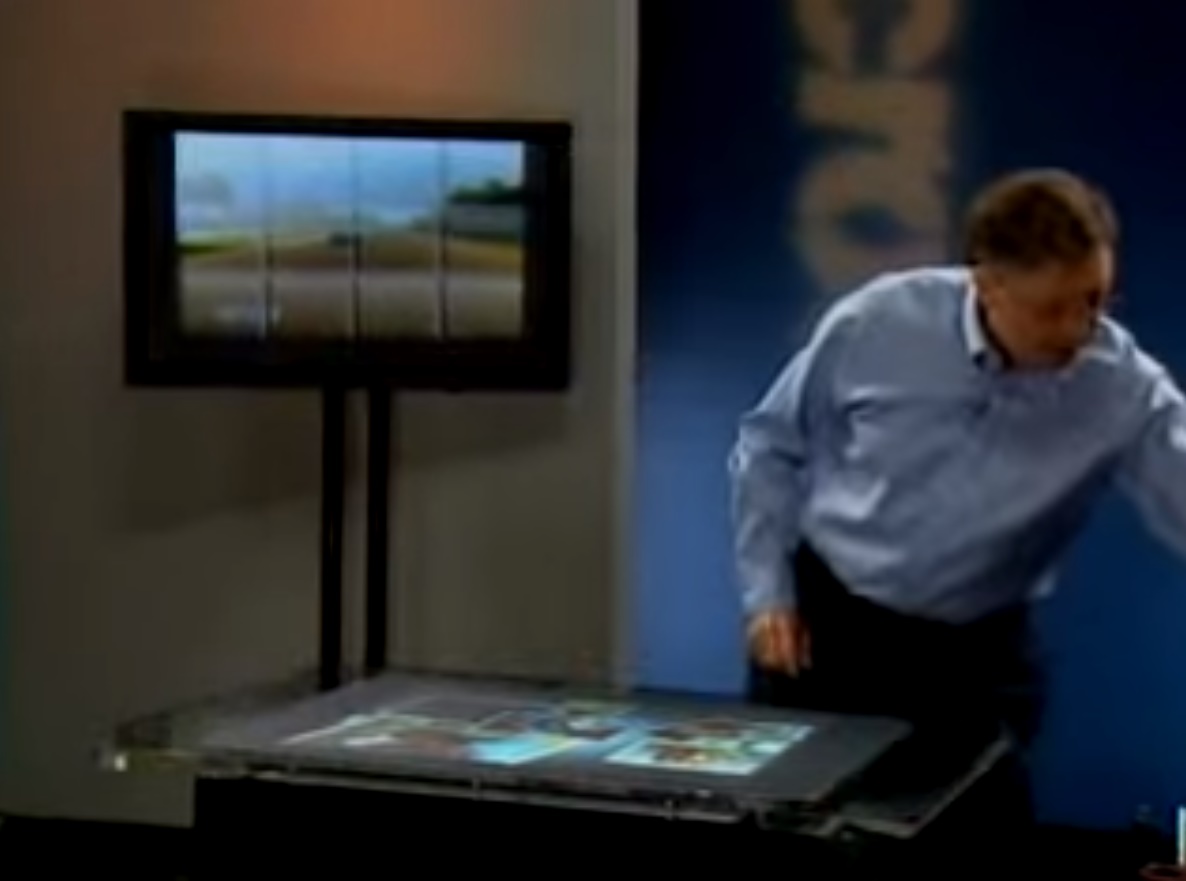Microsoft Surface: meet the smart table that started it all

For those of you who may have wondered where the Microsoft Surface, Surface Pro and Surface Book got their “first name”, the history of the name Surface traces back to a short-lived product which was very different in concept and design from what we have today.
The Surface 1.0 was originally a 30-inch table-top tablet, outfitted with an infrared-powered touchscreen, featuring the ability to recognize objects placed on the screen. This concept was born under the definition of “surface computing”, which was a favorite of Bill Gates’s. Back in 2000-2001, Gates had a vision of an entire line of table-top devices, including coffee tables, dining tables and desks, fitted with a touchscreen, and capable of interacting with users in a variety of ways, through the ability to recognize and analyze objects placed on top of the capacitive surface.
The design and technology was first brought to Gates, by Microsoft’s research scientist Stevie Bathiche and his team, before the device got its name.
In its first, and raw iteration, the new device was also a primary inspiration to the touchscreens featured in the 2002 sci-fi “Minority Report”, following discussions between Steven Spielberg and Bill Gates, regarding the initial prototype.
The Surface 1.0 eventually launched as an actual product in 2008, following a presentation in which Bill Gates showcases some of the functionality available at the time, including a paint program, games and productivity applications.
The initial launch was well received by a small number of companies, including a number of casinos in Las Vegas, and a few hotels in New York. With that said, the original Surface was a short-term run, as the numbers quickly painted a bleak picture for a product that featured capabilities way ahead of its time.
Eventually, Microsoft chief of hardware Panos Panay, was reassigned to building what would eventually become the Surface Tablet, whose name Panay didn’t immediately agree with, as his initial commitment was to developing a Surface table:
"When you're working on something like the table, that's what a 'Surface' is." ~ Panos Panay.
During the first decade of the new Millennium, touchscreens were extremely rare, with the exception of the first touchscreen smartphones, like the first iPhone, and a number of PDAs running Windows CE, and the first iteration of Windows Mobile. Understandably, the motivation to create a touchscreen device with a bigger purpose than a smartphone, was curbed by the limitations of the technology of that time, as well as the limited availability of public Wi-Fi, and the limitations and high costs of 3G connectivity.
When the first actual Microsoft Surface tablet was released in 2012, under the highly criticized supervision of Steve Ballmer, the company took a tremendous hit, and had to write the first generation of Surface 2 tablets off, due to a combination of factors that included mass confusion in regard to the operating system, Windows RT, which was thought by consumers are the same as Windows 8. Upon realizing that Windows RT was an all-mobile operating system with more in common to iOS and Android than to Windows, sales precipitated catastrophically.
Right then, Microsoft learned the first lesson about making a Windows tablet: it has to run Windows.
The second lesson came with Windows 8, as the company started feeling another kind of backlash from PC users who upgraded to Windows 8, and suddenly left without a Start Menu or a Start Button, and completely thrown by a full-on touch interface, to which consumers didn’t respond too well.
Finally, redemption came with the Surface 3, a portable tablet running a desktop version of Microsoft Windows 8.1, and a makeshift Start button, which eventually would give way to the development of Windows 10, an operating system with all the benefit and familiar tropes of Windows 7, the stability of Windows 8, and a responsive interface that transforms from desktop to tablet mode depending on whether there is a keyboard present.
One curious thing about the original Surface it that it’s easy to see how Microsoft may still be sold on the dream of an actual table-top touchscreen, by the looks of the Surface Hub, a giant 80 inch Windows 10 PC tablet available to enterprise customers, which makes us wonder how it would look if it were flipped 90 degrees and put on legs.
Ready to shop?
If you are looking for the perfect Windows 10 tablet or laptop, PortableOne has you covered with a wide range of Windows 10 devices, including Surface tablets, and high-end laptops for school, work and play..